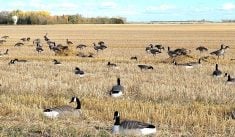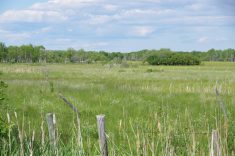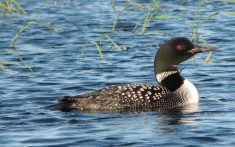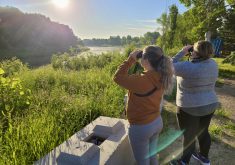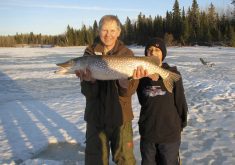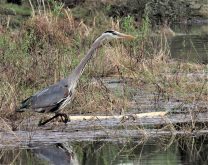British Columbia, like Manitoba, is in the early days of its fight against chronic wasting disease. Things are moving quickly, and they must.
On March 13, the British Columbia government announced it would harvest deer in the Kootenays. The word came six weeks after CWD, a fatal prion disease in deer, elk, moose and caribou, was first detected in that province.
CWD is difficult to manage and nearly impossible to eradicate. Infected animals don’t show symptoms for about 18 months, which means appearance or behaviour don’t necessarily reveal whether it has CWD.
Read Also

Introducing the purple tomato
Health Canada has approved bioengineered The Purple Tomato (TM), maybe leading to new culinary uses and health benefits?
Infected animals continuously shed prions into the environment in saliva, feces and urine, and through their bodies when they die and decompose. These prions stay infectious for years, although researchers still don’t know how long.
To make matters worse, there is no viable way to disinfect or burn these prions away. Reducing disease spread is still the best approach to minimizing effects on cervids and the people who rely on them.
This often involves removing animals, among other regulatory measures, such as restricting transport and disposal of road-killed cervids in affected areas.
There is no such thing as live testing for CWD. Needed samples (tonsils, lymph nodes) are collected from carcasses.
Managing the spread means removing the animals most likely to be infected.
The B.C. government is planning to remove 20 mule deer (mostly male) and five male white-tailed deer, the latter having been found in other provinces and U.S. states as more likely to be infected.
Removing and testing even apparently uninfected animals can provide valuable information, such as which species, sex and location in which CWD most often occurs. This can inform management.
Removal can be contentious, however. There are questions on how many, where, when and how they are removed. The number removed depends on management goals, as well as ecological and ethical considerations.
Determining the percentage of animals infected with CWD would require sampling many animals (in the hundreds) to ensure infected individuals are captured while prevalence is low, such as when only one per cent of animals are infected.
But large-scale removals have their own implications for the sustainability of cervid populations.
They are also logistically challenging. Such tactics are difficult to sustain in the longer term, and can be rendered ineffective when the headlines die down and community support is lost.
Management programs might sample fewer animals in efforts to gain more information surrounding where infected animals are found. This is the case in B.C., with its limited harvesting tactic.
Planning and preparation
Deciding where to remove animals requires careful planning based on where CWD has been found, how likely it is to spread, and the cultural, ecological and economic importance of cervids for local communities. Managers focus on areas close to confirmed cases — in the case of B.C., a 10-kilometre radius — and areas where there are large or dense populations of cervids.
According to our research, community involvement is essential for effective CWD management. Management plans can involve removal through sharpshooting, hunter-harvest and special hunts that allow for limited harvest outside the hunting season.
In B.C., members of the Tobacco Plains Indian Band are leading the removal of deer. All animals that test negative for the disease will be used by the community or donated to food banks.
Sustainable management
Hunter-harvest is a critical component of sustainable CWD management. Beyond removing infected animals and providing samples for testing, local hunters, trappers, and community members bring valuable knowledge and support, helping to implement sustainable strategies that reflect communities’ values and needs.
CWD management programs that prioritize listening to those most affected help to build trust and make better decisions about where to focus efforts.
In wildlife management, there will be disagreements. Management is complex and contains uncertainties. What works in one region might not work in another.
We must acknowledge these uncertainties, while recognizing the need to act quickly. The experiences of other jurisdictions in managing CWD contain valuable lessons about the potential impacts of the disease on conservation, economic stability and food security. Early action is the best chance we have to minimize the impacts of this disease on cervids, the people who rely on them and the ecosystem.



